Introduction: The Emotional Weight of Empty Chairs
In the far corner of almost every Indian home, there’s a chair nobody sits on, a table nobody uses, or a cupboard that creaks but stays shut. These items are what we call “ghost furniture” — functional yet forgotten, present yet passive. Not abandoned out of laziness, but kept with intent… or perhaps emotion.
● These aren’t just unused furniture pieces
● They are often heirlooms, dowry gifts, wedding beds, old wooden swings, or dressing tables with cracked mirrors
● Their presence is more psychological than functional
In this blog post, we’ll unpack why Indian households retain these “ghosts” of furniture, what this says about our relationship with memory, space, and design — and whether they deserve to stay or finally move on.
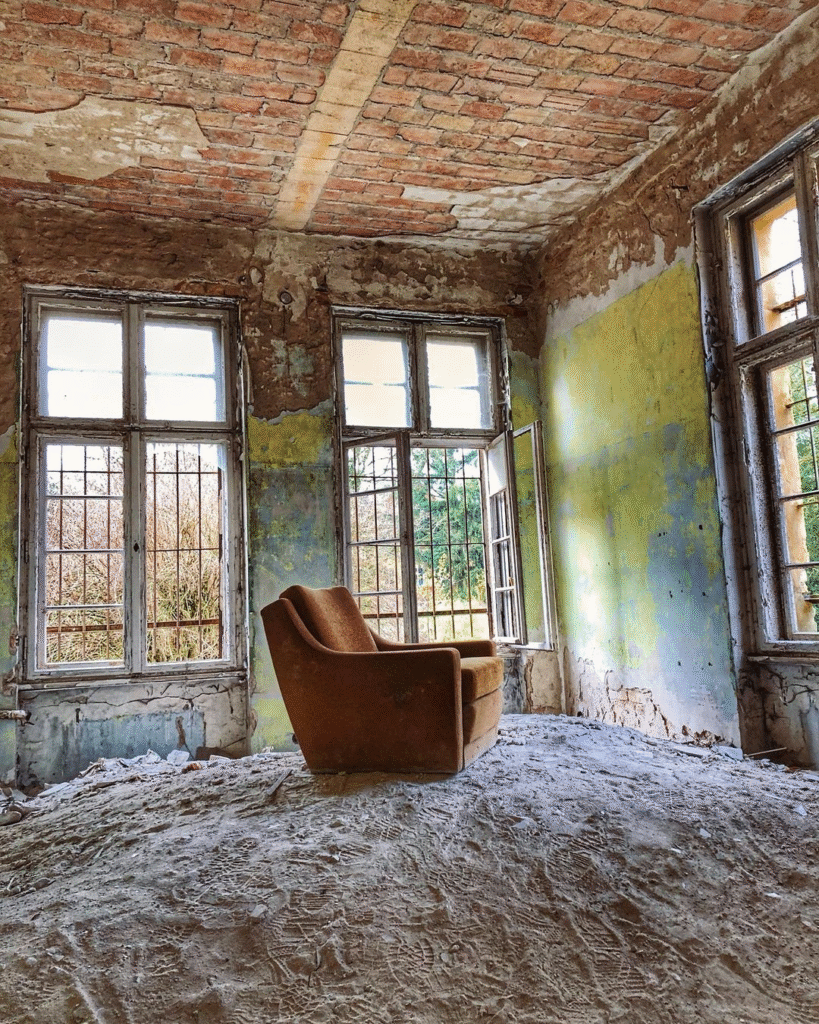
● What Is Ghost Furniture?
Ghost furniture refers to items in a home that are kept despite being rarely, if ever, used. Unlike broken furniture or clutter, ghost furniture is:
● Fully intact or semi-functional
● Often preserved intentionally
● Retained for emotional, cultural, or symbolic reasons
● Never questioned during renovation or space planning
It occupies corners, corridors, and verandahs — living as a memory capsule more than a utility object.
● A Deeply Indian Phenomenon
While ghost furniture exists everywhere, it thrives in Indian homes because of:
● Joint family traditions – Multiple generations often pass down furniture
● Attachment to “things” as memory vessels – Old objects become portals to our past
● Cultural guilt around throwing away “usable” items – “It still works, why throw it?”
● Dowry or wedding possessions – Furniture becomes part of a couple’s origin story
● Spiritual beliefs in Vastu or energy – Disposing of old furniture is sometimes seen as energetically risky
In India, furniture isn’t always a tool. It’s often a symbol.
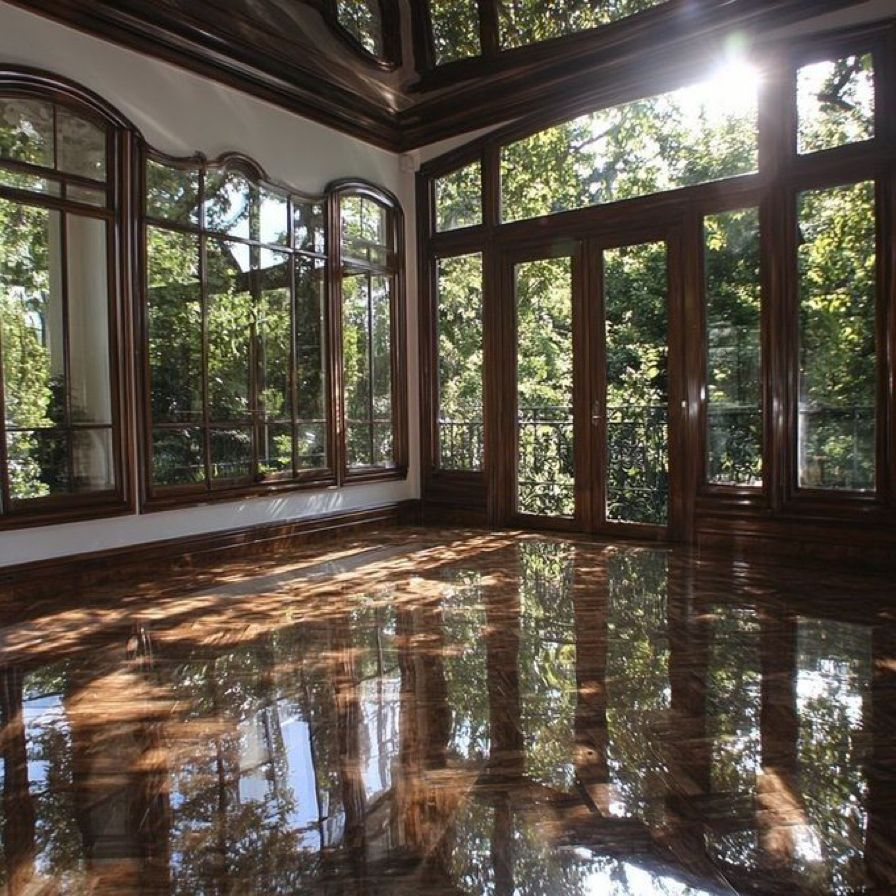
● Examples of Ghost Furniture We Keep
Walk through a typical middle-class or upper-middle-class Indian home, and you’ll find:
● The swing (jhoola) no one uses, but everyone cleans
● The Godrej almirah – too heavy to move, too sacred to discard
● The single cane chair that belonged to a late grandfather
● The mirrored dresser whose drawers stick, but stays because “we got it from my in-laws”
● The teapoy or corner table that serves no purpose other than collecting dust and admiration
● The formal dining set used twice a year, wrapped in covers the rest of the time
● Cane or wicker stools moved from one home to another like family heirlooms
● The wedding bed — not slept on, but occupies the guest room for decades
Each of these is often retained not for use, but for remembrance.
● Psychology Behind Holding On
At the heart of ghost furniture is emotional inertia. Some core psychological reasons:
● Nostalgia – The piece becomes a connection to a person or time
● Identity – Especially in joint families, old furniture is proof of lineage
● Fear of regret – “What if I need it later?”
● Inherited values – A cultural teaching that throwing things away is wasteful
● Attachment to suffering – Especially in post-trauma homes (loss, divorce), furniture becomes emotional scaffolding
We often anthropomorphize furniture: “She would never forgive me if I sold that chair.”
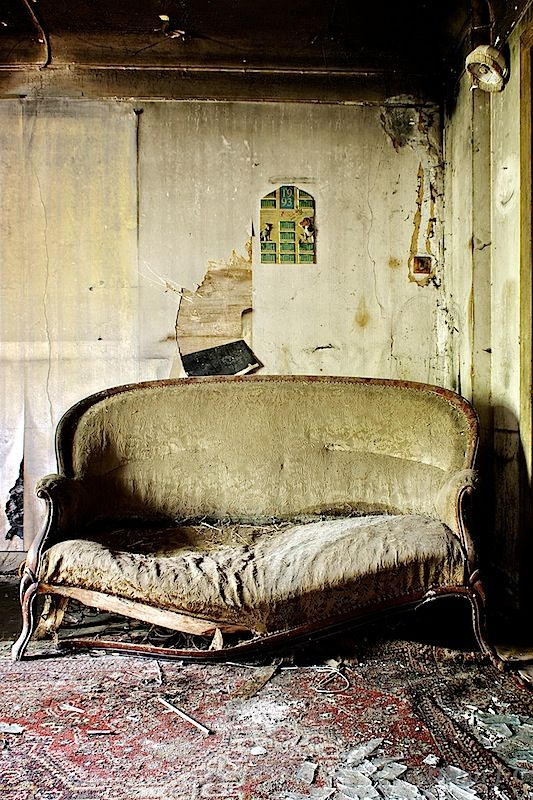
● Spiritual & Vastu Beliefs
In Indian households, many believe old furniture contains “stuck energies”. As per Vastu:
● Wood absorbs energy – both good and bad
● Disposing of ancestral items without rituals can invite bad luck
● Beds, especially, are considered highly personal energy zones
● Many homes won’t donate beds used by deceased family members
Hence, these pieces are left untouched — as a form of respect or caution.
● The Role of Inherited Guilt
Letting go of ghost furniture can sometimes feel like betrayal.
● “This was your father’s chair.”
● “Your grandmother stitched that cover with her hands.”
● “That cupboard has been with us since we moved here in 1986.”
This inherited guilt creates emotional paralysis. People would rather lose usable space than face the imagined emotional consequence of discarding an object.
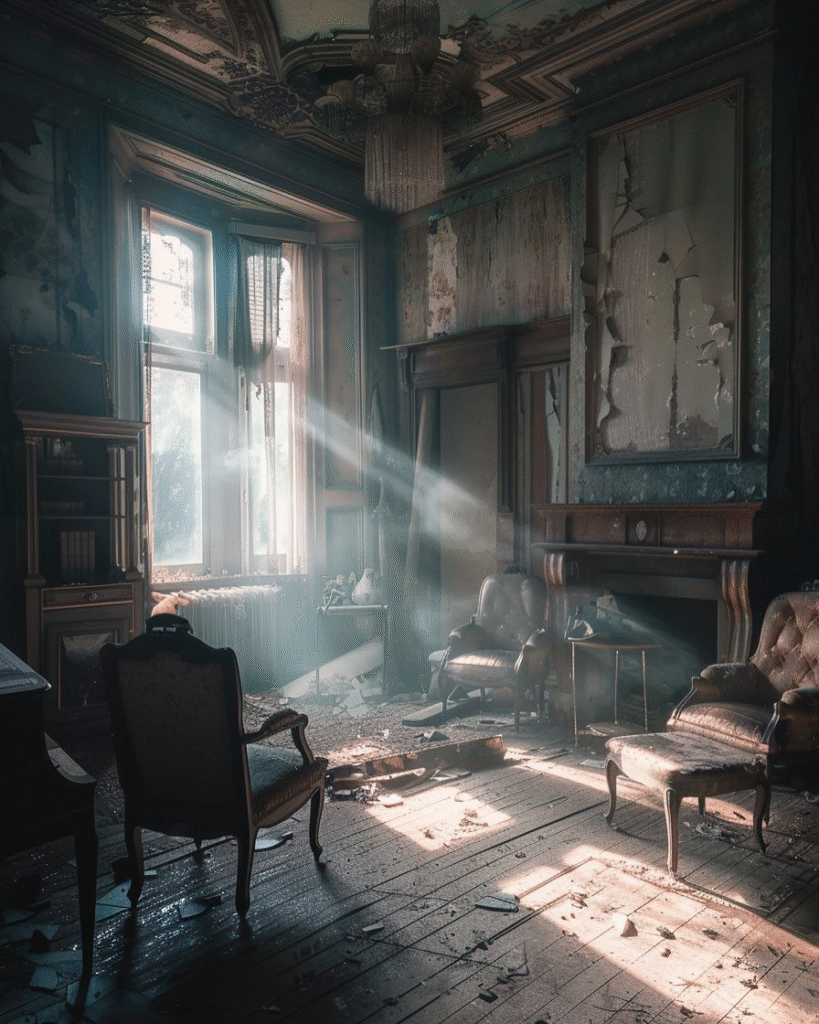
● Interior Design’s Dilemma with Ghost Furniture
As a designer, I often walk into homes with stunning renovation plans but immovable constraints:
● “We want a modern living room, but that cabinet has to stay.”
● “You can change anything — but don’t touch that swing.”
● “Make the pooja room modern, but don’t move grandfather’s chair.”
This becomes a challenge of preservation vs. progress.
The design has to accommodate these silent furniture relics — not as afterthoughts, but as reverent features.
Sometimes we create shrines of nostalgia, unintentionally, through these pieces.
● Ghost Furniture as Emotional Architecture
Let’s flip the perspective. What if these items are not obstacles to good design, but extensions of it?
When placed with intention, ghost furniture can:
● Create emotional storytelling in interiors
● Establish spatial memory (a certain chair always in that window corner)
● Act as anchors in homes that go through constant change
● Add texture and age to sterile, modern interiors
● Bring familial continuity into urban modular flats
These are memory imprints that tell stories — not of trends, but of people.
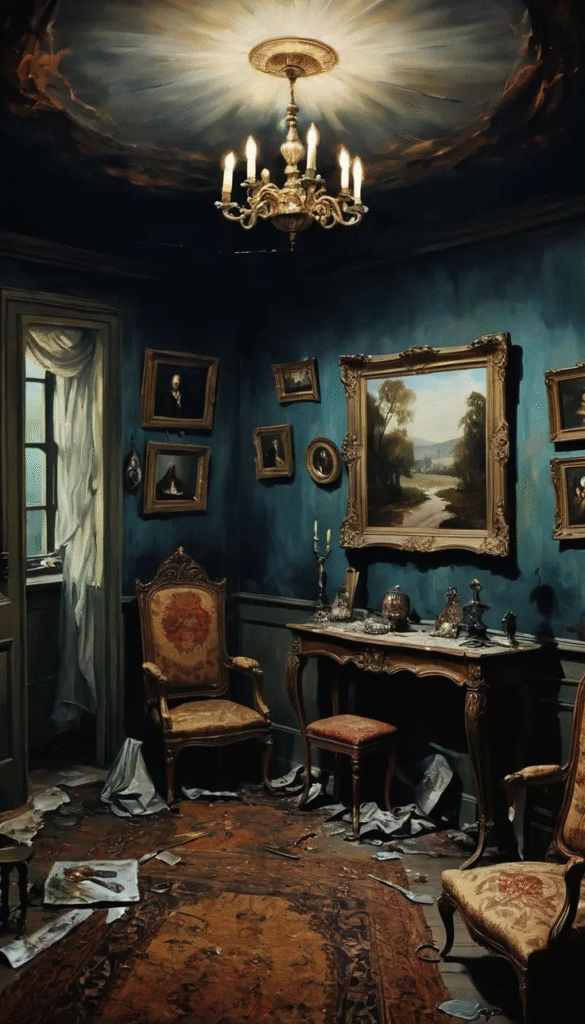
● But What Is the Cost of Keeping Them?
Despite the emotional arguments, ghost furniture does have a cost:
● Spatial – Precious square footage is lost in small homes
● Functional – Unused furniture blocks airflow, cleaning, movement
● Aesthetic – Clutter or mismatched styles may disrupt design harmony
● Emotional stagnancy – Keeping relics can trap a family in past narratives
● Generational resentment – Young homeowners often feel burdened by the obligation to keep items they didn’t choose
Design evolves. But ghost furniture doesn’t.
● Letting Go, Gently: A New Design Ritual
We don’t need to throw away everything — but we can:
● Photograph & archive furniture with personal stories
● Repurpose parts – Use wood or handles to build something new
● Rotate memory pieces in home like art, not fixtures
● Host a ‘Goodbye Gathering’ – Invite family to share memories before donation
● Donate to someone in need – Add new life to the object’s story
● Build a miniature model – A fun way to preserve without storing
It’s about ritualized release, not forced removal.
● Designers: Embrace, Don’t Erase
As architects and interior designers, we must stop treating ghost furniture as:
● Space-eaters
● Design misfits
● Negotiation problems
Instead, we can:
● Frame them as narrative pieces
● Integrate them into the new layout with creative upcycling
● Use contrast: vintage + modern juxtaposition
● Help clients retell stories instead of hiding them
● Celebrate them as “soul anchors” in modern homes
Sometimes the creaky swing becomes the new Instagram backdrop.
● Personal Take: My Grandmother’s Dressing Table
In my own home, there’s a dressing table from the 1950s — curved teakwood, worn drawers, an oval mirror fogged by time.
I’ve never used it.
I never even saw her use it.
But it reminds me of her routines, her perfumes, the era she lived in.
When I sit in front of it, I feel connected across generations.
That, to me, is design at its most human.
Not new. Not shiny. But emotional.
● Conclusion: Between Memory and Modernity
Ghost furniture isn’t just about chairs or beds.
It’s about the weight of memory, the discomfort of disposal, and the beauty of continuity.
In India, where families live through objects, furniture often outlives relationships, houses, and even cities.
The question isn’t whether to keep or throw —
It’s how to carry memory forward without letting it paralyze the present.
So ask yourself: What furniture are you afraid to let go of — and why?
Get Interior Design That Respects Memory and Space
Want a home that balances the old soul with new design?
Contact me for architecture + interior design services that:
● Respect heritage
● Embrace emotion
● Solve space challenges
● And tell your story through design
📩 Email: contact@mishulgupta.com
📍 Serving Pan-India from Ambala, Haryana
